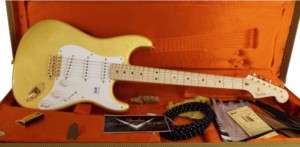Analysis of a piece of music by specialty
Contents
- Step 1. Preliminary acquaintance
- Step 2. Determine the mood, image and genre
- Step 3. Elementary analysis of the musical text
- Step 4. We play the piece from sight as best we can
- Step 5. Determine the type of texture and learn the piece in batches
- Step 6. Fingering and technical exercises
- Step 7. Work on the rhythm
- Step 8. Work on melody and phrasing
- Step 9. Assembling the piece
- Step 10. Aerobatics
In this article we will talk about how to prepare for a specialty lesson at a music school, and about what the teacher expects from a student when he assigns analysis of a piece of music as homework.
So, what does it mean to disassemble a piece of music? This means starting to calmly play it according to the notes without hesitation. To do this, of course, it is not enough to just go through the play once, sight reading, you will have to work through something. Where does it all begin?
Step 1. Preliminary acquaintance
First of all, we must become familiar with the composition we are about to play in general terms. Usually students count pages first – it’s funny, but on the other hand, this is a business approach to work. So, if you are used to counting pages, count them, but the initial acquaintance is not limited to this.
While you are flipping through the notes, you can also look at whether there are repetitions in the piece (the music graphics are similar to those at the very beginning). As a rule, there are repetitions in most plays, although it is not always immediately noticeable. If we know that there is a repetition in a play, then our life becomes easier and our mood noticeably improves. This is, of course, a joke! You should always be in a good mood!
Step 2. Determine the mood, image and genre
Next you need to pay special attention to the title and author’s surname. And you don’t need to laugh now! Unfortunately, too many young musicians become stunned when you ask them to name what they play. No, they say that this is an etude, a sonata or a play. But sonatas, etudes, and plays are written by some composers, and these sonatas, etudes with plays sometimes have titles.
And the title tells us, as musicians, what kind of music is hidden behind the sheet music. For example, by the name we can determine the main mood, its theme and figurative and artistic content. For example, by the titles “Autumn Rain” and “Flowers in the Meadow” we understand that we are dealing with works about nature. But if the play is called “The Horseman” or “The Snow Maiden,” then there is clearly some kind of musical portrait here.
Sometimes the title often contains an indication of some musical genre. You can read about genres in more detail in the article “Main musical genres,” but now answer: a soldier’s march and a lyrical waltz are not the same music, right?
March and waltz are just examples of genres (by the way, sonata and etude are also genres) with their own characteristics. You probably have a good idea of how march music differs from waltz music. So, without even playing a single note, just by reading the title properly, you can already say something about the piece you are about to play.
In order to more accurately determine the nature of a piece of music and its mood, and to feel some genre features, it is recommended to find a recording of this music and listen to it with or without notes in hand. At the same time, you will learn how a given piece should sound.
Step 3. Elementary analysis of the musical text
Everything is simple here. Here are three basic things that you should always do: look at the keys; determine tonality by key signs; look at the tempo and time signatures.
It’s just that there are such amateurs, even among experienced professionals, who both sight-read and scribble everything, but see only the notes themselves, not paying attention to either the keys or the signs… And then they wonder why they don’t have It’s not beautiful melodies that come out of your fingers, but some kind of continuous cacophony. Don’t do that, okay?
By the way, firstly, your own knowledge of music theory and experience in solfeggio can help you determine the tonality by key signs, and, secondly, such useful cheat sheets as the circle of quarto-fifths or a tonality thermometer. Let’s move on.
Step 4. We play the piece from sight as best we can
I repeat – play as best you can, from the sheet, straight with both hands (if you are a pianist). The main thing is to get to the end without missing anything. Let there be mistakes, pauses, repetitions and other hitches, your goal is to just stupidly play all the notes.
This is such a magical ritual! The case will definitely be successful, but success will begin only after you play the entire play from beginning to end, even if it turns out ugly. It’s okay – the second time will be better!
It is necessary to lose from beginning to end, but you don’t need to stop there, as most students do. These “students” think that they’ve just gone through the play and that’s it, sort of figured it out. Nothing like this! Although even just one patient playback is useful, you need to understand that this is where the main work begins.
Step 5. Determine the type of texture and learn the piece in batches
Texture is a way of presenting a work. This question is purely technical. When we touched the work with our hands, it becomes clear to us that there are such and such difficulties associated with the texture.
Common types of texture: polyphonic (polyphony is terribly difficult, you will need to play not only with separate hands, but also learn each voice separately); chordal (chords also need to be learned, especially if they go at a fast pace); passages (for example, in the etude there are fast scales or arpeggios – we also look at each passage separately); melody + accompaniment (it goes without saying, we learn the melody separately, and we also look at the accompaniment, whatever it may be, separately).
Never neglect playing with individual hands. Playing separately with your right hand and separately with your left hand (again, if you are a pianist) is very important. Only when we work out the details do we get a good result.
Step 6. Fingering and technical exercises
What a normal, “average” analysis of a piece of music in a specialty can never do without is fingering analysis. Thumbs up straight away (don’t give in to temptation). Correct fingering helps you learn the text by heart faster and play with fewer stops.
We determine the correct fingers for all difficult places – especially where there are scale-like and arpeggio-like progressions. Here it is important to simply understand the principle – how a given passage is structured (by the sounds of which scale or by the sounds of which chord – for example, by the sounds of a triad). Next, the entire passage needs to be divided into segments (each segment – before moving the first finger, if we are talking about the piano) and learn to see these segments-positions on the keyboard. By the way, the text is easier to remember this way!
Yes, what are we all about pianists? And other musicians need to do something similar. For example, brass players often use the technique of simulating playing in their lessons – they learn the fingering, press the right valves at the right time, but do not blow air into the mouthpiece of their instrument. This greatly helps to cope with technical difficulties. Still, fast and clean play needs to be practiced.
Step 7. Work on the rhythm
Well, it’s impossible to play a piece in the wrong rhythm – the teacher will still swear, whether you like it or not, you’ll have to learn to play correctly. We can advise you the following: classics – playing with the count out loud (like in first grade – it always helps); play with a metronome (set yourself a rhythmic grid and do not deviate from it); choose for yourself some small rhythmic pulse (for example, eighth notes – ta-ta, or sixteenth notes – ta-ta-ta-ta) and play the entire piece with the feeling of how this pulse permeates it, how it fills all the notes whose duration greater than this chosen unit; play with emphasis on the strong beat; play, stretching a little, like an elastic band, the last beat; don’t be lazy to calculate all sorts of triplets, dotted rhythms and syncopations.
Step 8. Work on melody and phrasing
The melody must be played expressively. If the melody seems strange to you (in the works of some composers of the 20th century) – it’s okay, you should love it and make candy out of it. She is beautiful – just unusual.
It is important for you to play the melody not as a set of sounds, but as a melody, that is, as a sequence of meaningful phrases. Look to see if there are phrasing lines in the text – from them we can often detect the beginning and end of a phrase, although if your hearing is fine, you can easily identify them with your own hearing.
There’s a lot more that could be said here, but you yourself know very well that phrases in music are like people talking. Question and answer, question and repetition of a question, a question without an answer, the story of one person, exhortations and justifications, a short “no” and a long-winded “yes” – all this is found in many musical works (if they have a melody). Your task is to unravel what the composer put into the musical text of his work.
Step 9. Assembling the piece
There were too many steps and too many tasks. In fact, and, of course, you know this, that there is no limit to improvement… But at some point you need to put an end to it. If you’ve worked on the play at least a little before bringing it to class, that’s a good thing.
The main task of analyzing a piece of music is to learn how to play it in a row, so your final step is always to assemble the piece and play it from beginning to end.
That’s why! We play the entire piece from beginning to end several more times! Have you noticed that playing is now noticeably easier? This means your goal has been achieved. You can take it to class!
Step 10. Aerobatics
There are two aerobatic options for this task: the first is to learn the text by heart (you don’t need to think that this is not real, because it is real) – and the second is to determine the form of the work. Form is the structure of a work. We have a separate article devoted to the main forms – “The most common forms of musical works.”
It is especially useful to work on form if you are playing a sonata. Why? Because in sonata form there is a main and a secondary part – two figurative spheres in one work. You must learn to find them, determine their beginnings and ends, and correlate the conduct of each of them in the exhibition and in the reprise.
It is also always useful to divide the development or middle part of a piece into parts. Let’s say, it can consist of two or three sections, built according to different principles – in one there can be a new melody, in another – the development of already heard melodies, in the third – it can consist entirely of scales and arpeggios, etc.
So, we have considered such a problem as analyzing a piece of music from a performance perspective. For convenience, we imagined the whole process as 10 steps towards the goal. The next article will also touch on the topic of analyzing musical works, but in a different way – in preparation for a lesson on musical literature.




